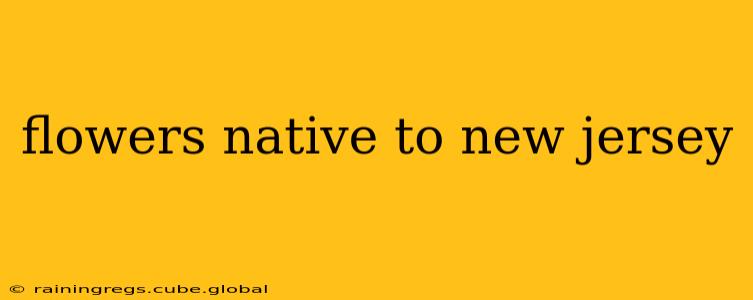New Jersey, with its diverse geography ranging from the sandy coastal plains to the rolling hills of the Piedmont region, boasts a rich tapestry of native wildflowers. These vibrant blooms not only add beauty to the landscape but also play a crucial role in supporting local ecosystems. From delicate spring ephemerals to the bold colors of summer wildflowers, discovering New Jersey's native flora is a rewarding experience for nature lovers and gardeners alike. This guide will explore some of the most common and captivating flowers you can find growing wild in the Garden State.
What are some common New Jersey wildflowers?
Many stunning wildflowers call New Jersey home. Some of the most common include:
-
Black-eyed Susans (Rudbeckia hirta): These cheerful yellow daisies with dark brown centers are a familiar sight throughout the state, brightening meadows and roadsides from summer into fall. Their hardiness and ease of cultivation have made them popular garden additions as well.
-
Butterfly Weed (Asclepias tuberosa): A vibrant orange milkweed, crucial for monarch butterfly survival, this plant adds a splash of color to dry, sunny areas. Its unique flower structure attracts a variety of pollinators.
-
Wild Bergamot (Monarda fistulosa): This fragrant mint family member offers clusters of lavender-pink flowers that attract hummingbirds and butterflies. Its essential oil has a long history of medicinal and culinary use.
-
Bloodroot (Sanguinaria canadensis): This early spring bloomer is easily recognized by its single white flower and distinctive red sap. It's a delicate beauty that adds a touch of elegance to woodlands.
-
New England Aster (Symphyotrichum novae-angliae): These late-blooming asters paint the autumn landscape in shades of purple and pink, providing a vital late-season food source for pollinators.
What are some less common but beautiful wildflowers of New Jersey?
While the above are commonly seen, many other wildflowers add to the state's botanical diversity:
-
Smooth Blue Aster (Symphyotrichum laeve): This aster features striking blue flowers and thrives in drier habitats.
-
Fringed Loosestrife (Lythrum alatum): Its delicate pink flowers add a touch of elegance to wetlands.
-
Purple Coneflower (Echinacea purpurea): Known for its medicinal properties, this daisy-like flower boasts a distinctive central cone.
-
Fireweed (Chamerion angustifolium): This tall, striking flower in shades of pink and purple is often found in disturbed areas.
What time of year do wildflowers bloom in New Jersey?
The blooming season for New Jersey wildflowers stretches across many months, offering a continuous display of color:
-
Early Spring: Expect to see delicate spring ephemerals like Bloodroot, Trout Lilies, and Spring Beauties emerge from the melting snow.
-
Late Spring/Early Summer: As temperatures rise, wildflowers like Black-eyed Susans, Butterfly Weed, and Wild Bergamot put on a vibrant show.
-
Summer/Autumn: Summer brings a profusion of blooms, followed by the late summer and autumn displays of Asters and Goldenrods.
Where can I find wildflowers in New Jersey?
New Jersey offers many locations to witness the beauty of native wildflowers:
-
State Parks and Forests: These protected areas often preserve diverse habitats that support a wealth of wildflowers.
-
Preserves and Wildlife Sanctuaries: Dedicated to conservation, these areas offer excellent opportunities for wildflower viewing.
-
Hiking Trails: Many hiking trails wind through areas where wildflowers thrive.
-
Meadows and Fields: Open spaces often support a variety of wildflowers.
Are there any endangered wildflowers in New Jersey?
Yes, several wildflowers in New Jersey are considered threatened or endangered due to habitat loss and other factors. It's crucial to observe these plants responsibly, avoiding picking or disturbing them. Always check the New Jersey Department of Environmental Protection's website for updates on protected species and responsible viewing guidelines.
How can I help protect New Jersey wildflowers?
Protecting New Jersey's native wildflowers requires collective action:
-
Support conservation efforts: Donate to or volunteer with organizations dedicated to preserving natural habitats.
-
Avoid picking wildflowers: Leave them in their natural environment for others to enjoy and for pollinators to thrive.
-
Practice responsible gardening: Choose native plants for your garden, reducing the need for pesticides and promoting biodiversity.
By appreciating and protecting New Jersey's native flowers, we ensure these beautiful blooms continue to thrive for generations to come. So, get out there and explore the natural beauty of the Garden State!
